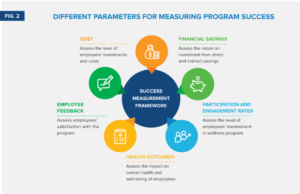One of the most common dilemmas among employers when considering a wellness program for their company is that they simply don’t have the data or measurable results to back up the investment. So even if they already have a wellness program, how can they evaluate if it’s working, or whether it’s worth the investment?
With that in mind, this week we just HAD to go over this awesome report compiled by Cigna (one of the insurance companies we work with regularly through our corporate wellness programs).
This report was essentially a meta study on the ROI of wellness programs. Here are the key findings:
1. The best way to earn returns on your wellness program is to make sure it’s tailored specifically to your workplace. This is why we conduct surveys before designing your wellness program. This way we’ll know exactly what your employees need. Check out this paragraph from the report:
“Programs that are grounded in a solid understanding of how health and well-being issues manifest in each unique workplace, in particular, generated the most impressive returns.”

2. There are also organizational factors that impact what your wellness program will need. Cigna recommends that businesses identify the most important loss-drivers for your company (absenteeism, healthcare costs, productivity, etc), then designing a program that targets those factors and establishing metrics that will measure and monitor the change, as well as engagement in the program.
An example: if your biggest struggle is healthcare costs, perhaps we would suggest talks on diabetes prevention, activity-based exercise classes, and seminars on nutrition. On your end as the employer you could measure the trends in healthcare costs during the duration of the program, and after.
3. That said, mental health support may be the most valuable investment. Cigna says:
“We found that mental health interventions yielded high returns, with the most effective programs yielding a sixty-fold return on the initial investment.”
4. Companies need to monitor engagement and participation rates and take steps to improve them.
“When engagement rates changed from 75% to 92%, the return on investment increased eleven-fold.”
5. Leadership support needs to be obvious and engaging.
“Of particular significance is the role middle managers play in lifestyle management programs related to mental health. In successful programs, managers’ attitudes and beliefs – and their ability to communicate freely with their employees – helped to increase program participation and engagement.”
Lastly – and we can’t stress this enough – you need to monitor and evaluate a program’s effectiveness consistently! The report contains this awesome figure to make sure you’re covering all the bases in your evaluation.

